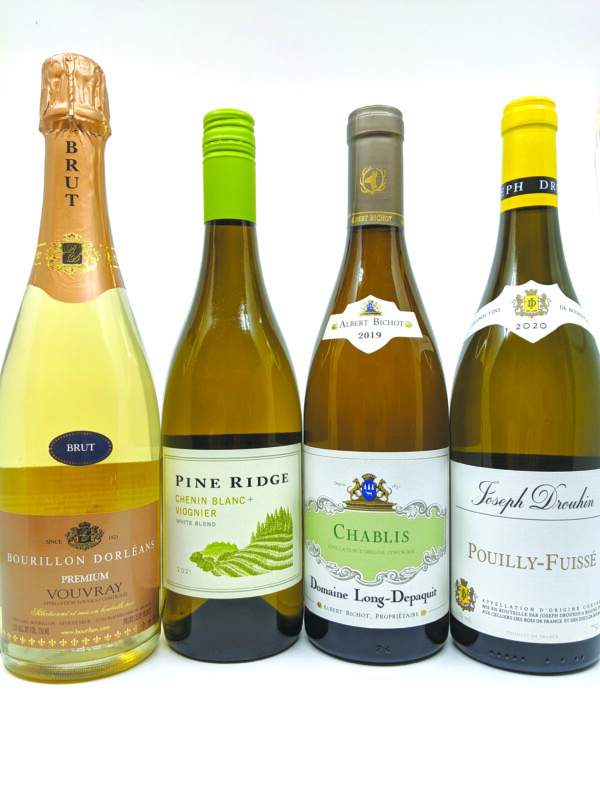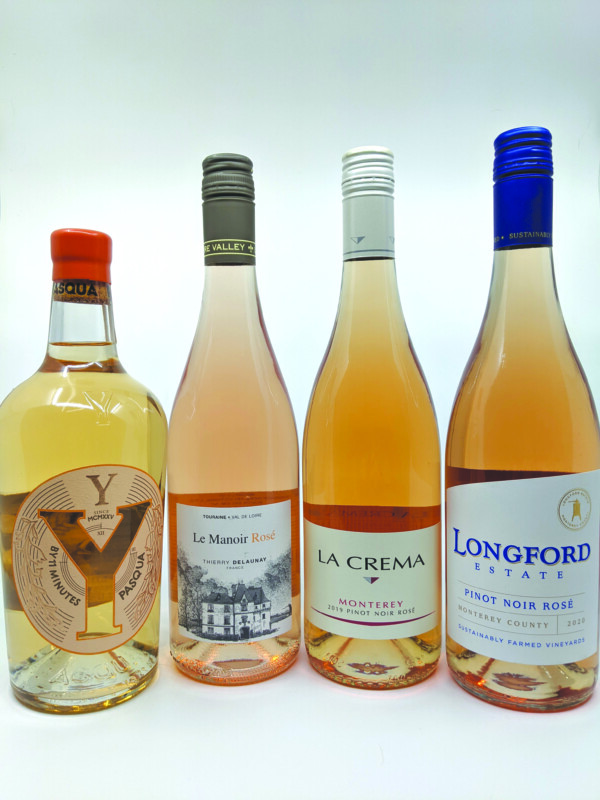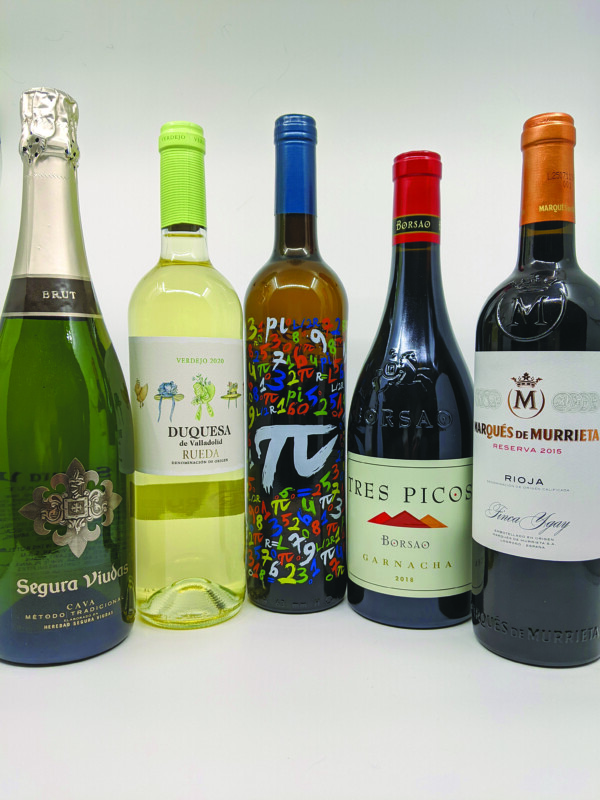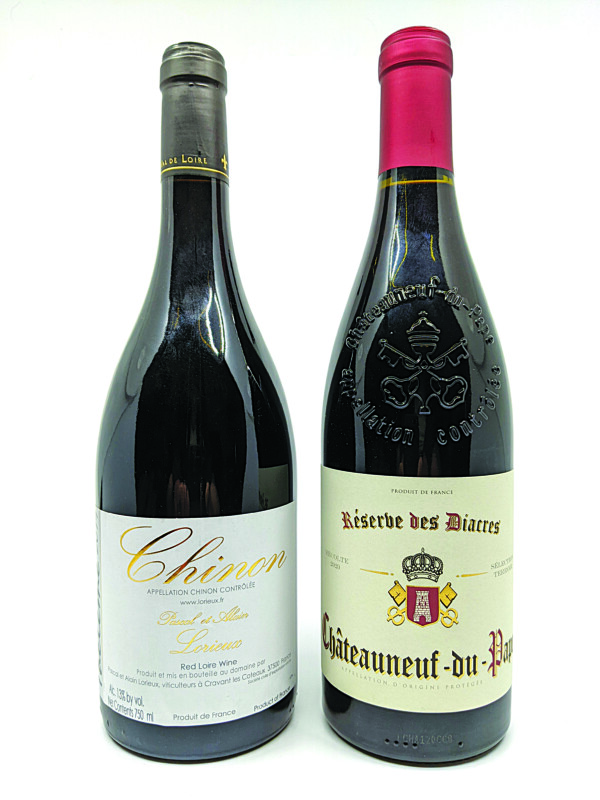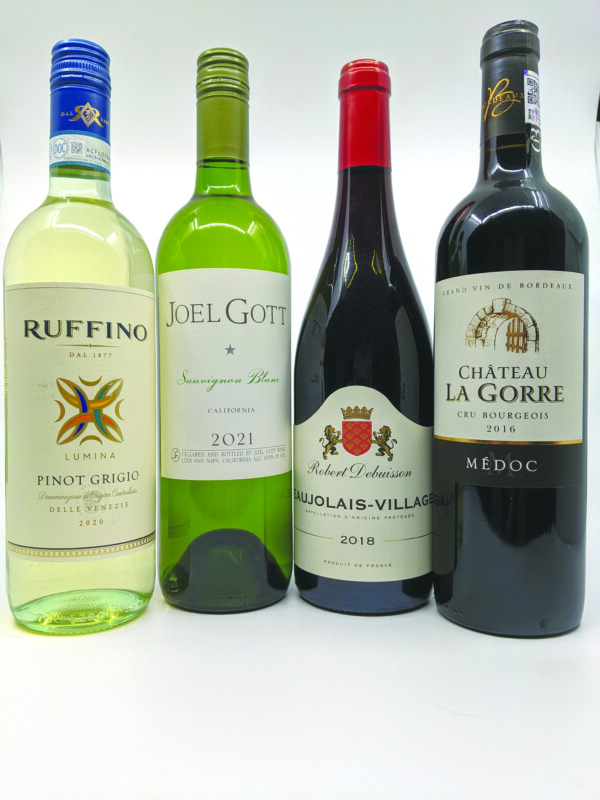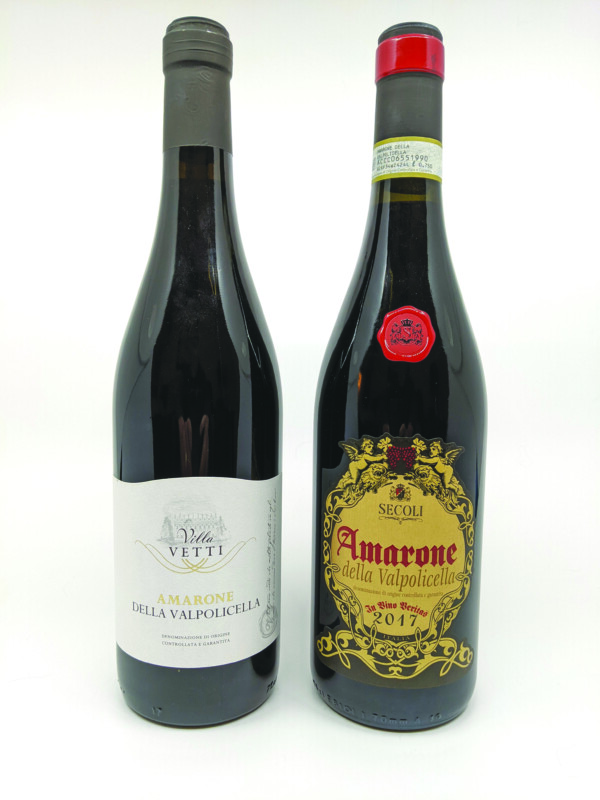Uncommon whites to go with your summer eats
It is summer and we remain in an extended heat wave. This is the season of “summer whites”— those lightweight clothes of whiter-than-white to reflect the heat of the summer sun. It is also the season of light meals — salads, sandwiches, cool entrées and desserts! And it is the season to pair light, white wines, the color of a sun-shading straw hat, with those meals.
We are always looking for something off the beaten track, wines other than chardonnays and sauvignon blancs, so we headed to the Loire Valley in France and, surprisingly, Napa Valley, to try a few whites made with other varietals.
Our first wine, the Domaine Bourillon Dorleans Premium Vouvray Brut (available at the New Hampshire Liquor & Wine Outlets, priced at $64.99, reduced to $23.99), is a delightful take on a crémant, which is sparkling wine not produced in Champagne and sometimes made with grapes other than chardonnay and pinot noir. It has a pale gold color; the bubbles are tiny and persistent. To the nose, there are citric notes with just a touch of yeast. To the tongue this bubbly is ripe with apple and honey while remaining crisp with acidity. The wine is made from 100 percent chenin blanc grapes from 30-year-old vines. It is made by the method Champenoise, with sur lie for 16 months, before being disgorged and re-corked. While crisp, this wine has a very subtle creaminess to it. Chilled, it is a perfect wine to be sipped, or joined to soft cheeses or a light meal.
Our second wine, the 2021 Pine Ridge Chenin Blanc + Viognier (priced at $17.99 but reduced to $15.99 at the New Hampshire Liquor & Wine Outlets), is a blend of 80 percent chenin blanc and 20 percent viognier. This wine is interesting in that I tend to think of chenin blanc as coming from the Loire Valley, which has a climate decidedly cooler than that of California. Because of the terroir and heat of the Valley, this wine is more expressive with notes of rich honeysuckle, orange blossoms and citric. These carry through to the tongue. In the glass, the wine has the palest of a light straw, almost silver, color. The inherent creaminess of the chenin blanc is emboldened in this wine, making it a great accompaniment to a frittata or a seafood tostada. It is indeed interesting seeing this wine come from a winery such as Pine Ridge, located in Stag’s Leap, Napa Valley, producing iconic cabernet sauvignons. This is a blend one would never see in France. The grapes for this wine come from the Sacramento River Delta, where 90-degree days are met with cool nights, producing a wine with lush flavors.
Our third wine, the 2019 Domaine Long-Depaquit Chablis (priced at $29.99, reduced to $27.99 and available at the New Hampshire Liquor & Wine Outlets), is a Burgundian chardonnay. This is a perfect wine to pair with grilled pork, salmon or tuna, shellfish, or mild cheeses if you cannot stand the prospect of cooking anything. The color is a pale greenish yellow. To the nose and tongue we find green apples, along with citric notes of lemon and lime with a slight trace of almonds, and that flinty earthiness that permeates the wines of Chablis. Chablis is the northernmost wine-growing region in Burgundy. The ancient soils of this region give its wines a distinctive minerality. This is a crisp, light wine that can make the summer heat tolerable.
Our fourth wine, a 2020 Joseph Drouhin Pouilly-Fuissé (priced at $31.99, reduced to $29.99 at the New Hampshire Liquor & Wine Outlets), is another chardonnay, but coming from vineyards in the villages of Pouilly and Fuissé, in the Mâconnaise subregion of Bourgogne, where the only grape variety grown is chardonnay. This wine is different from the others in that there is some barrel aging, six to eight months in the case of this wine, giving the wine a more “full-mouth-feel.” The color is golden, along with a slight green tinge. To the nose, green grapes and almonds abound; this is then carried through to the tongue. These are pleasant notes, not to be considered heavy, but instead ethereal, and with a long finish.
These are four wines that can satisfy every palate and yet are decidedly different from the mainstream everyday whites of chardonnay or pinot grigio. So, live dangerously! Try one of these alternative whites to pair with your summer evening meal. You will welcome the adventure!
Featured photo. Courtesy photo.

